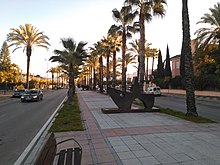Neocubism
Neocubism (or neoclassical cubism) is a term from the historiography of art that refers to the style of painting in which the artists of the first avant-garde in Spain began to express themselves around The twenties. While cubism reduces nature to the geometric forms that the artist considers essential or most significant, neo-cubism energetically outlines the styles and modes that characterize the European avant-garde; mixture of symbolism, surrealism and realism.
Context
The art situation in Spain in those years was very different from the rest of Europe:
among us, the styles, the modes that characterize the European avant-garde are not strongly shaped; among us there is, on the contrary, a certain eclecticism, a mixture of neocubism, symbolism and surrealism, even certain outbreaks of realism.Valeriano Bozal, History of art in Spain...: From Goya to our dayAkal, 1991, pg. 123.
The main representatives in Spain of this tendency were, among others, the painters Daniel Vázquez Díaz and Francisco Cossío, or the sculptors Alberto and Ángel Ferrant. Some stages of the work of Salvador Dalí and Joan Miró are also considered neo-cubist.
In the 1940s, this neo-cubist trend was also known as schematic figuration and its formal elements were borrowed from Cubism and Art Deco. He also shows the influence of Henry Moore and the Italian figuratives Marini, Campigli and Morandi. This tendency is displaced by the informalism of the fifties, and the artists who represented it opted for different trajectories, within abstract or figurative painting. Among others, it is worth mentioning Cristino de Vera, Adolfo Estrada, Gloria Merino, Carlos Pascual de Lara, Vaquero Turcios, Juan Méjica García, Manuel Hernández Mompó, Antoni Tàpies, Modesto Ciruelos and Hernando Viñes.
